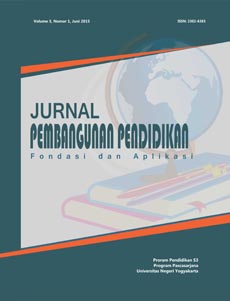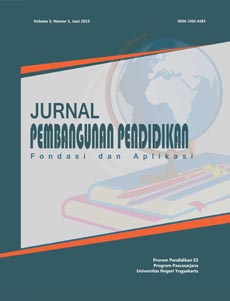Validity and reliability analysis of a higher education decision-making instrument in Central Kalimantan
Keywords:
Higher Education, Consumer Choice, indigineousAbstract
This study aims to analyze the validity and reliability of an instrument developed to measure the factors influencing students’ decision-making in pursuing higher education in Central Kalimantan. Employing a quantitative descriptive design with a survey method, the instrument was constructed based on eight components: Individual Factors, Family Background, Training Activities, Social Factors, Cultural Influences, Achievement, Attitudes toward Institutional Factors, and Price Sensitivity. The questionnaire consisted of 48 Likert-scale items administered to 98 senior high school students from various districts in Central Kalimantan. Item validity was examined using the Pearson Product-Moment correlation, while reliability was assessed using Cronbach’s Alpha with the aid of SPSS. The analysis identified 30 items as valid and reliable indicators, meeting the statistical criteria for inclusion. The final instrument demonstrated strong internal consistency, with a Cronbach’s Alpha coefficient of 0.880. These findings confirm that the instrument is psychometrically sound and suitable for use in further research related to higher education decision-making. The validated scale provides a comprehensive framework for understanding the diverse individual, social, cultural, and institutional factors influencing students’ choices, particularly within the Central Kalimantan context.
References
Acemoglu, D., & Autor, D. (2011). Skills, tasks and technologies: Implications for employment and earnings. In Handbook of labor economics (Vol. 4, pp. 1043-1171). Elsevier.
Acemoglu, D., & Robinson, J. A. (2012). The origins of power, prosperity, and poverty. New York (US): Crown Business.
Arikunto, S. (2012). Research Procedures A Practical Approach. Rineka Cipta.
Azwar, S. (2012). Reliability and validity 4th edition: Student Library.
Becker, G. S. (2009). Human capital: A theoretical and empirical analysis, with special reference to education. University of Chicago press.
Busnawir, B. (n.d.). Study of Reliability Stability (Case of Attitude Scale and Emotional Intelligence). Journal of Mathematics Education, 3(1), 27-36.
Coleman, J. S. (1988). Social capital in the creation of human capital. American Journal of Sociology, 94, S95-S120.
Cutler, D. M., & Lleras-Muney, A. (2006). Education and Health: Evaluating Theories and Evidence. National Poverty Center Working Paper Series# 06-19. National Poverty Center, University of Michigan.
Diener, E., Oishi, S., & Ryan, K. L. (2013). Universals and cultural differences in the causes and structure of happiness: A multilevel review. Mental Well-Being: International Contributions to the Study of Positive Mental Health, 153-176.
Durand, M. (2015). The OECD better life initiative: How's life? and the measurement of well-being. Review of Income and Wealth, 61(1), 4-17.
Guntoro, D. W., Munandar, H., Arsyad, M., Nabilah, S. I., Lilin, E., Rasida, R., Yani, N. E., Wulandari, V., Putri, A. A., & Saputri, E. W. (2023). IMPROVING FINANCIAL LITERACY IN STUDENTS OF ONE-ROOF PUBLIC SMP 8 PALANGKA RAYA, CENTRAL KALIMANTAN. Martabe: Journal of Community Service, 6(7), 2466-2472.
Guntoro, D. W., Munandar, H., Herman, H., & Mustikaningsih, W. (2022). INCREASING THE UNDERSTANDING OF FINANCIAL DIGITAL TRANSFORMATION OF THE MANAGEMENT OF THE BLESSING ORPHANAGE PALANGKA RAYA. Martabe: Journal of Community Service, 5(8), 3077-3084.
Hemsley-Brown, J., Oplatka, I., Hemsley-Brown, J., & Oplatka, I. (2016). Organizational Factors Influencing Higher Education Consumer Choice. Higher Education Consumer Choice, 94-117.
Jailani, M., Guntoro, D. W., & Sholekhah, I. (2022). Gender and age as individual influences in choosing higher education. Wiyata Dharma: Journal of Educational Research and Evaluation, 10(1), 8-14.
Janti, S. (2014). Analysis of validity and reliability with a Likert scale on the development of si/ti in determining decision making for implementing strategic planning in the garment industry. Snast Proceedings, 155-160.
Kotler, P., Armstrong, G., Ang, S. H., Leong, S. M., Tan, C. T., & YAU, O. (2008). Principles of marketing: A global perspective.
Le, T., Tran, T., & Le, H. (2022a). Factors Affecting Students' Decision to Choose Regional Public Universities: An Empirical Study from Vietnam. Journal of Asian Finance, Economics and Business, 9(4), 143-152. https://doi.org/10.13106/jafeb.2022.vol9.no4.0143
Le, T., Tran, T., & Le, H. (2022b). Factors Affecting Students' Decision to Choose Regional Public Universities: An Empirical Study from Vietnam. Journal of Asian Finance, Economics and Business, 9(4), 143-152. https://doi.org/10.13106/jafeb.2022.vol9.no4.0143
Meilindawati, R., & Wijayanti, K. (2023). STUDENTS' NUMERACY LITERACY IN THE INDONESIAN RELISTIC MATHEMATICS APPROACH (PMRI) ASSISTED BY HOTS PROBLEMS. 14(4), 469-474. https://doi.org/10.31764
Mincer, J. (1958). Investment in human capital and personal income distribution. Journal of Political Economy, 66(4), 281-302.
Purnastuti, L., Miller, P. W., & Salim, R. (2013). Declining rates of return to education: evidence for Indonesia. Bulletin of Indonesian Economic Studies, 49(2), 213-236.
Savickas, M. L. (2005). The theory and practice of career construction. Career Development and Counseling: Putting Theory and Research to Work, 1, 42-70.
Srirahayu, R. R. Y., & Arty, I. S. (2018). Validity and reliability of science literacy performance assessment instruments for STEM-based Physics lessons. Journal of Educational Research and Evaluation, 22(2), 168-181. https://doi.org/10.21831/pep.v22i2.20270
Sugiyono. (2014). Educational Research Methods Quantitative, Qualitative, and R&D Approaches. Alfabeta.
United Nations Educational, S., & (UNESCO), C. O. (2014). Teaching and learning: Achieving quality for all. Education for All Global Monitoring Report.
Published
How to Cite
Issue
Section
Citation Check
License
Copyright (c) 2025 Jurnal Pembangunan Pendidikan: Fondasi dan Aplikasi

This work is licensed under a Creative Commons Attribution-ShareAlike 4.0 International License.
The Authors submitting a manuscript do so on the understanding that if accepted for publication, copyright publishing of the article shall be assigned to Jurnal Pembangunan Pendidikan: Fondasi dan Aplikasi
 | Jurnal Pembangunan Pendidikan: Fondasi dan Aplikasi by https://journal.uny.ac.id/index.php/jppfa is licensed under a Creative Commons Attribution-ShareAlike 4.0 International License. |













